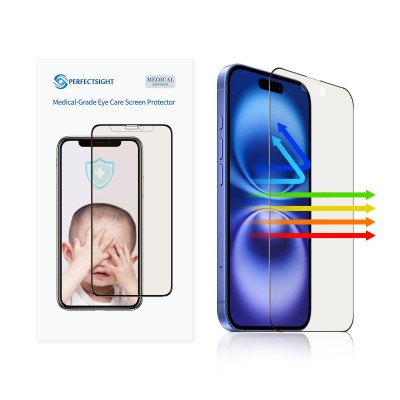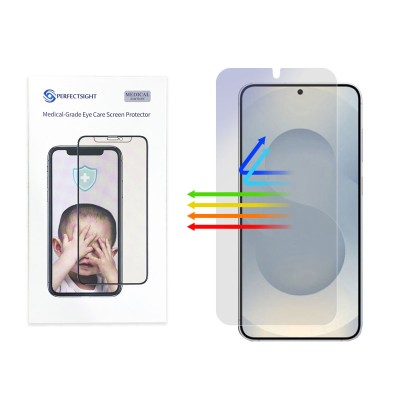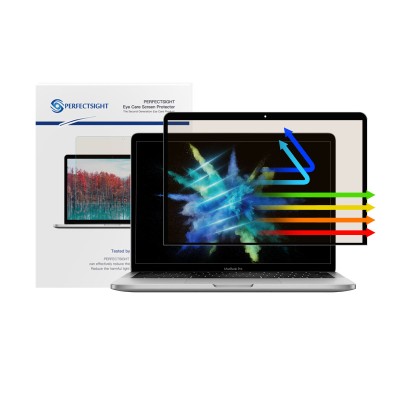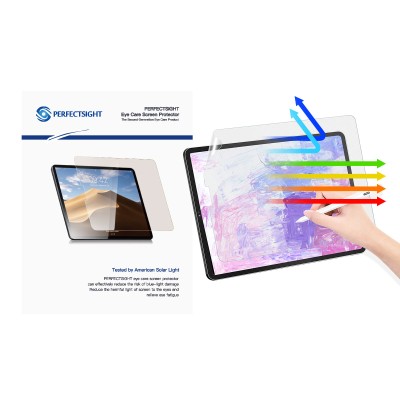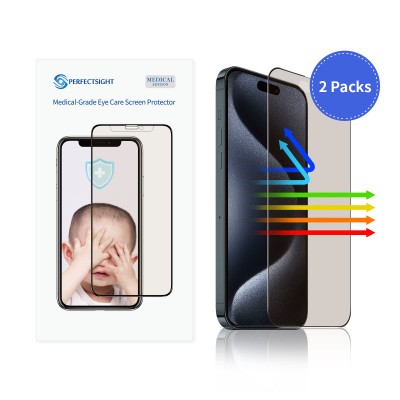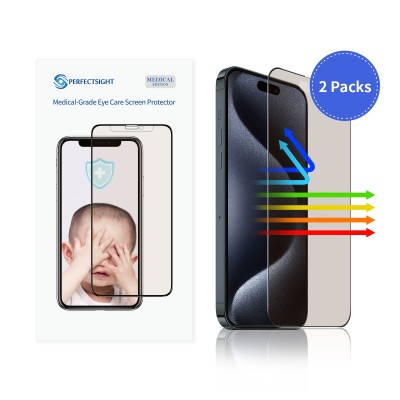Your Eyes and Blue Light: Do Anti-Blue Light Screen Protectors Work?
In today's digital age, the topic of blue light exposure has sparked considerable debate:
On the one hand, some people are skeptical, believing that blue light emitted from screens of devices such as smartphones, tablets, and computers does not pose a serious risk to health but is just anxiety created by manufacturers to promote their products. They believe that screen exposure is insignificant. Some people do not believe in blue light at all, thinking it is something illusory.
On the other hand, some people acknowledge the existence of blue light and its potential impact on eye health. For these people, using anti-blue light screen protectors is seen as a practical solution to mitigate the negative effects of long-term screen time.

The Pros and Cons of Blue Light
In fact, blue light does exist, and blue light is not all harmful. Blue light between 480 and 500 nanometers has a role in adjusting biorhythms, which is related to sleep, mood, memory, etc., and is beneficial to the human body; what is really harmful is high-energy blue light within 400 to 460 nanometers, especially short-wave blue light with a wavelength of 435-440 nanometers, which is most harmful to the retina. Long-term exposure to blue light can cause damage to retinal cells, leading to decreased or even loss of vision. There are many authoritative works to prove this:
American Academy of Ophthalmology (AAO): This authoritative organization has issued guidelines on blue light, discussed the possible effects of digital screens on the eyes, and mentioned that blue light may cause digital eye fatigue.
National Eye Institute (NEI): This organization has supported and conducted a series of studies on the effects of blue light on retinal health. Studies have shown that high-energy blue light may be potentially toxic to retinal cells, and long-term exposure may cause retinal damage.
Reports published by some authoritative organizations, such as the World Health Organization (WHO) and the American Academy of Ophthalmology, also mentioned that although blue light exists naturally, the intensity and duration of its source may be potentially harmful to the eyes. Such reports recommend that people take appropriate measures to protect their eyes, especially when using electronic devices for long periods of time.
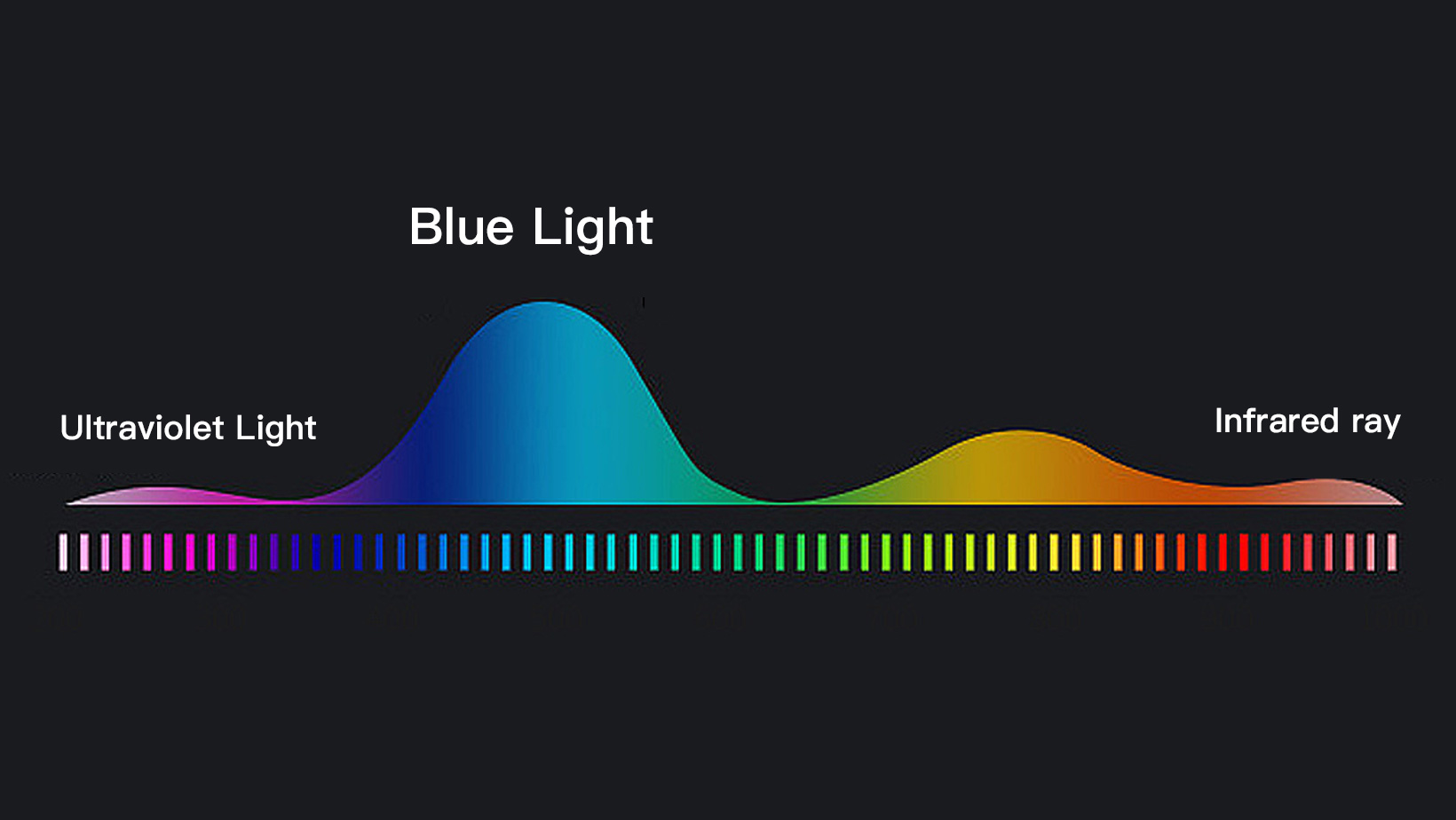
How to Protect Yourself from Blue Light?
Although research on the effects of blue light is still ongoing, there is scientific evidence that moderate blue light is beneficial, while excessive blue light, especially from artificial light sources, may cause discomfort and health risks. Therefore, taking appropriate precautions, such as using blue light-blocking glasses or screen protectors, and arranging the time of using electronic devices properly will help reduce potential blue light hazards.

1. Use Blue Light Filters
Screen Filters: Blue light filters are available for smartphones, tablets, and computers. These filters block a significant amount of blue light from reaching your eyes while maintaining display visibility. They are simple to install and can make a significant impact in minimizing eye strain. PERFECTSIGHT screen protector uses self-developed rare earth coating technology to achieve protection against harmful blue light. Through the "radar absorption principle" of the F22 stealth fighter, rare absorbing materials synthesized from multiple layers of rare earth elements can eventually achieve a blue light radiation filtering rate of >55% in the 380nm-480nm spectrum band; the high-energy short-wave blue light interception rate in the 435-440 nanometer band reaches 55%-70%, reducing the irreversible damage caused by blue light to the eyes.
2. Adjust Your Lighting
Control Glare: To reduce glare on your device screens, just adjust the lighting in your environment. Do not make your screen too bright, and avoid using the devices in completely dark or very bright rooms.
Use Warm Lighting: At night, try to use warmer lighting, not bright white or blue light. This can reduce the amount of blue light that exposes you and help you to sleep better.
3. Practice Good Screen Habits
Maintain Distance: Keep a reasonable distance between your eyes and your screen. The farther away the screen is, the less strain your eyes will experience.
Blink Often: Remember to blink frequently when using digital devices. Blinking helps keep your eyes moist and reduces dryness and irritation.
4. Limit Screen Time Before Bed
Wind Down: Avoid looking at bright screens for at least two to three hours before bed. Blue light can disrupt your sleep cycle, making it harder to fall asleep. If you must use devices at night, consider using a blue light filter or switching to night mode.
While pursuing technological convenience, we should pay more attention to health and protect our eyes. With the continuous deepening of relevant research, people will have a better understanding of blue light and its effects in the future and will be able to use various digital devices more scientifically and reasonably, thereby achieving a balance between digital life and health.
